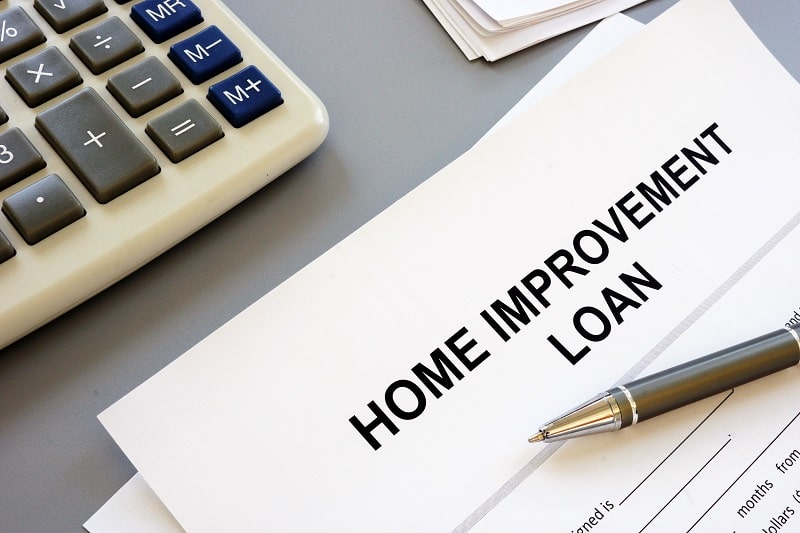Today’s economy has been affected in a multitude of ways by the COVID-19 pandemic, and the current real estate market is reflective of some of those most extreme changes. In the midst of this seller’s market, many homeowners are looking to benefit from the decrease in inventory and the rise in sale prices. Before they put their house on the market, however, most homeowners tend to make improvements to their property to attract more potential buyers. To accomplish this, homeowners turn to home improvement loans.
Home improvement loans offer homeowners immediate access to funds they can spend on permitted construction projects, major renovations, and even minor repairs. From whole-house fixer uppers to one-room renos, one of the best ways to finance projects in the home are home improvement loans. But there are a few steps you should take before deciding which loan product is best for your specific needs.
What to do before getting a loan
Here are some general action items to take in preparation for seeking out a home improvement loan:
1. Get an estimate on your project
Even if you plan on doing your home renovation project by yourself, you can get a good idea of what to expect in terms of material pricing from a professional contractor’s estimate. While DIY projects help you pinch a few pennies on labor costs, most of us don’t know how to budget for some bigger renovations and all that they entail. An estimate provides you with peace of mind that your loan will include sufficient wiggle room for any unforeseen obstacles along the way, and hiring a professional is the best way to ensure you’re covering all your bases.
2. Have your home appraised
In addition to scoping out just how much a project may cost you, it is a good idea to get an appraisal of your home. Many lenders will require an appraisal by a licensed appraiser in order to establish your home’s value. Getting an appraisal ahead of time could save you from delay later if you plan to move through the process quickly.
3. Understand your home equity
Once you learn the value of your home, your next step is to determine how much equity you have in your home. Since the equity you have in your home becomes collateral for a home equity loan, lenders will ultimately want to ensure that you are able to pay off not only the loan itself, but also the remainder of your mortgage loan. Lenders will take into account your total debts when considering your application for a home improvement loan to decide whether you will likely be able to repay what they lend you. Typically, the more equity you have in your home to begin with, the better you can demonstrate your ability to repay an additional loan.
4. Know your credit score
Finally, knowing your credit score and credit history will help you to prepare for choosing a loan product. Generally, the higher your credit score, the better loan you will qualify for. Though lower credit scores will sometimes make it more difficult to obtain a home improvement loan, there are plenty of options available for applicants with less-than-perfect credit.
Types of home improvement loans
Depending on your unique circumstances, a number of loan products exist for home renovation projects and fixer uppers. Here are some of the most common home improvement loans:
1. Home equity loan
The most straightforward and perhaps most common of all home improvement loans is a fixed-interest home equity loan. Similar to refinancing, taking out a home equity loan comes with closing costs and other fees associated with purchasing a home like the cost of an appraisal. For home equity loans, your house is used as collateral, which means your home is tied to the loan in the event that you default or fail to repay the entire amount. Additionally, for most home equity loans, lenders will require good credit.
2. Home equity line of credit
Home equity lines of credit are similar to home equity loans in that they are tied to the equity you have in your home, but are substantially different in that lines of credit are subject to fluctuating interest rates. The primary benefit of a home equity line of credit is that you can withdraw money up to the limit set by your lender within the specified period as you pay off your withdrawals. Though the fluctuations in your interest rate may prove to be riskier than a fixed-interest home equity loan, home equity lines of credit give you the flexibility needed to adjust your budget in real time as you progress through your home improvement project.
3. Home construction loan
When you want to make major improvements on your home in the form of a full-scale construction project, often, a home construction loan is required. Because of the nature of construction projects and risk incurred by the lender, home construction loans come with additional requirements for approval. On top of requiring an appraisal by a licensed appraiser, here are some of the added measures lenders take to ensure their investment is sound:
● The borrower pays a large down payment, typically between twenty and twenty-five percent
● The builder must be qualified and approved by the lender
● The lender requires detailed documentation of the project including floor plans and material costs
4. FHA 203(k) Loans
In an effort to help revitalize communities and neighborhoods, the Federal Housing Authority offers 203(k) loans which include the costs of rehabilitation within the mortgage. If you are looking to purchase a fixer upper in a qualifying area, an FHA 203(k) loan can provide you with financing for the house, itself, and any repairs and upgrades you plan to make, all for as little as a 3.5% down payment.
In today’s red hot real estate market, opportunities abound with fixer upper flips and updated home sales. Whether you’re planning a kitchen remodel or adding a garage to your home, a home improvement loan is the place to start to secure funding for your project.


